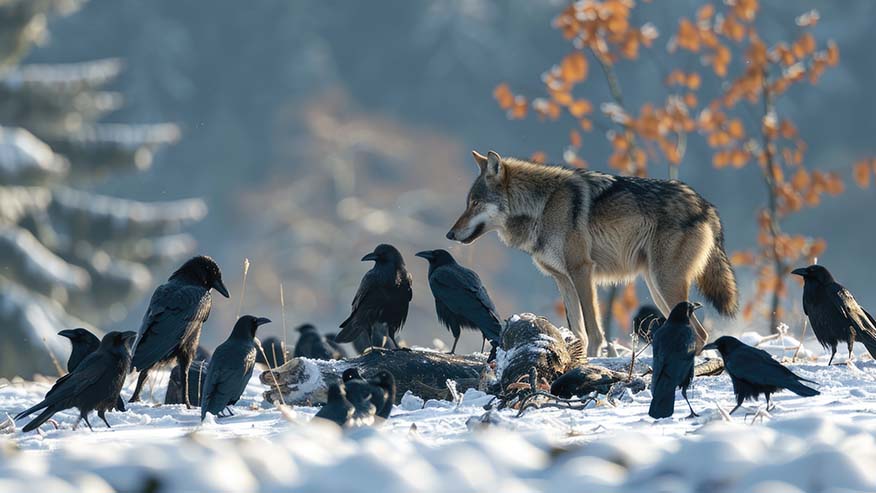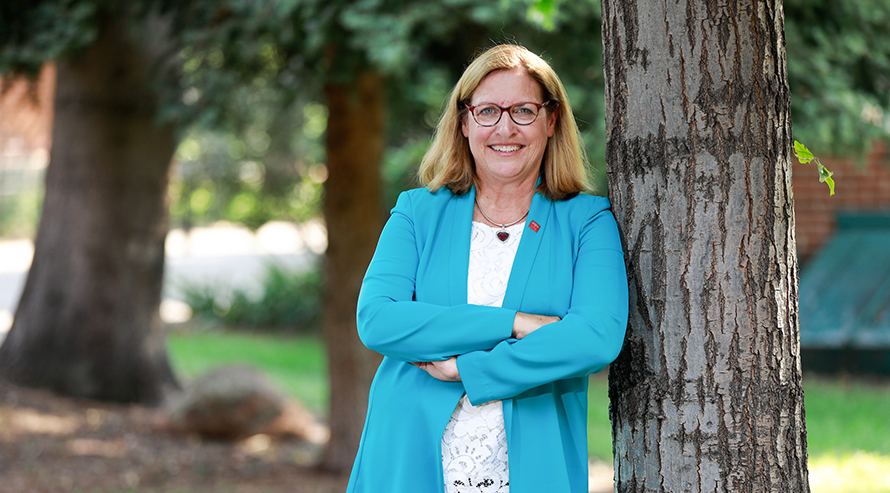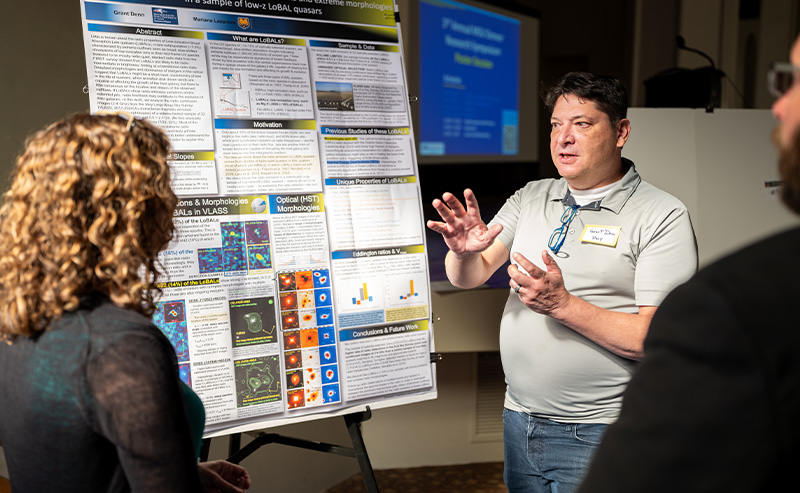Corvids, a family of birds that includes ravens, crows and magpies, are known for their acute intelligence and sociability. In the wild, they often show up to scavenge at sites where wolves have taken down prey — and the wolves don’t seem to mind much.
A new study assisted by Nels Grevstad, professor in the Department of Mathematics and Statistics at Metropolitan State University of Denver, finds that the same behavior holds true for captive wolves living at a wildlife sanctuary.
The collaboration between Grevstad and researchers at the University of Colorado Denver reported on the behavior of common ravens and black-billed magpies at the Colorado Wolf and Wildlife Center, in a ponderosa forest near Divide, a two-hour drive south of the Auraria Campus.
Over the course of a year, Summer Richman Merrell, a graduate student at CU Denver, and her advisor, Diana Tomback, Ph.D., a professor in the Department of Integrative Biology and an expert on bird behavior, made 20 trips to the center to observe the wolves while they were being fed in their fenced enclosures.
At each feeding, the researchers recorded the number of ravens and magpies who turned up, whether the birds obtained food and how each wolf or wolf pair responded to the birds. They also calculated the proportion of ravens and magpies obtaining food in each enclosure.
Grevstad looked at the data to tease out relationships among the number of corvids, the kind of food the wolves were being fed and environmental factors such as the temperature to see what variables might predict the birds’ behavior. Prior to publication, the trio participated in multiple discussions concerning the study and analyses.
“The people who are doing these studies have certain research questions that they are trying to answer,” Grevstad said. “When I guide them in terms of what sort of statistical procedures to use, it’s got to be something that can answer the questions that they have. But when I give them statistical advice, it also depends on how the data were collected, so one data-collection method might lead to one set of statistical procedures. If they have collected their data differently, it’s a completely different set of statistical-analysis procedures.”
Grevstad, who received his doctorate in Statistics and a master’s in Mathematical Statistics from Purdue University, worked for Purdue’s statistical-consulting service while he was in graduate school. “Basically, graduate students work for this consulting service and provide statistical consulting to other faculty members and other graduate students at the university,” he said. “That’s where I started doing this kind of work — what I call statistical consulting.”
Since joining the MSU Denver faculty in 2004, Grevstad has continued that practice, collaborating with colleagues in the Nutrition, Biology and Psychology departments, as well as scholars such as Tomback who are affiliated with other universities.
“I just kind of just started advertising by word of mouth that I’m available to help people on the statistical analysis of their data,” he said. “When I work on these projects, I learn a whole bunch from the people that are the experts in the area.”
Share your recent research project or publication with the Early Bird by submitting a news or story idea.








